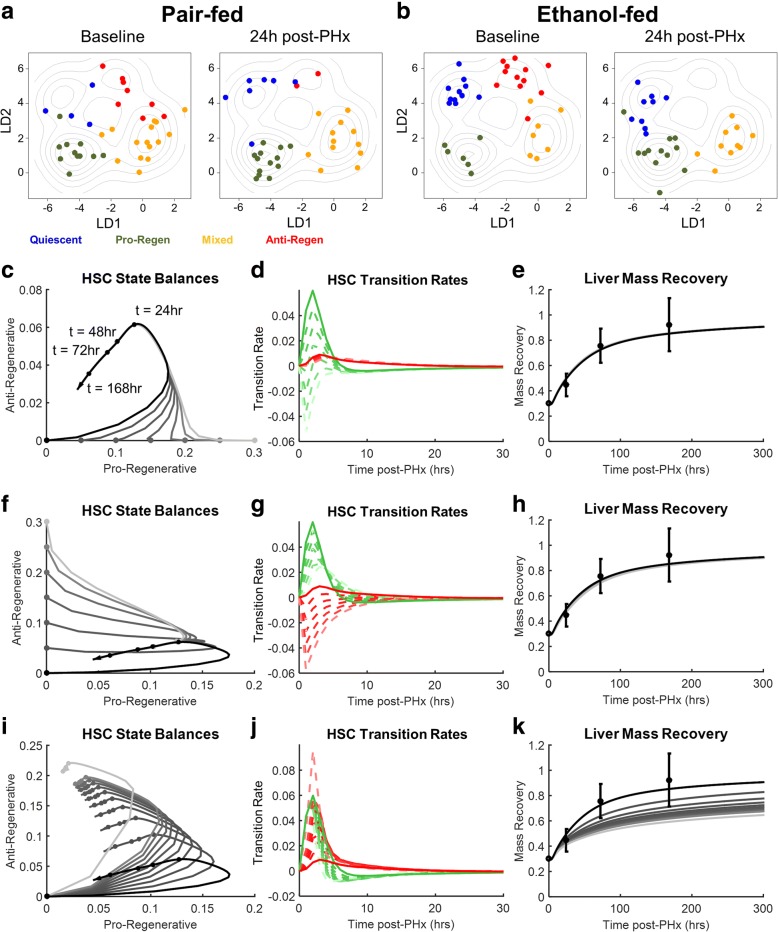Fig. 7.
Model analysis shows the impact of imbalances among multiple hepatic stellate cell transcriptional states on liver regeneration dynamics (a-b) Topographic map representation of HSC states shows the clustering of HSCs in each condition measured. c HSC behavior is constrained prior to 24 h post-PHx even after increasing the baseline fraction of pro-regenerative HSCs. This behavior assumes the absence of other changes associated with changing baseline amounts. d Similar to the phase plane behavior, transition dynamics converge prior to 24 h post-PHx. e Increasing the baseline amount of pro-regenerative HSCs has little effect on the dynamic regeneration profile. f HSC behavior is constrained prior to 24 h post-PHx even after increasing the baseline fraction of anti-regenerative HSCs. This behavior assumes the absence of other changes associated with changing baseline amounts. g Similar to the phase plane behavior, transition dynamics converge prior to 24 h post-PHx. h Increasing the baseline amount of anti-regenerative HSCs has little effect on the dynamic regeneration profile. i Increasing the quiescent to anti-regenerative transition rate leads to a dynamic change in HSC transcriptional state balances. j HSC transition dynamics change based on the balance of transition rates. k Increasing the quiescent to anti-regenerative transition rate causes a suppressed regeneration profile. This type of profile may be representative of liver function in diseased states, such as liver fibrosis

